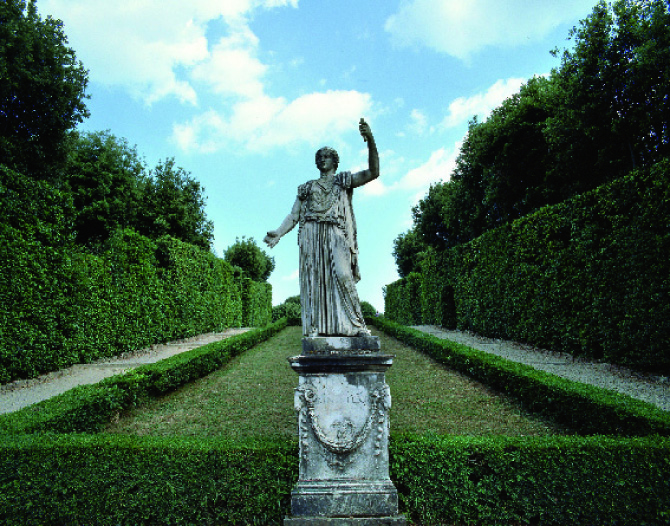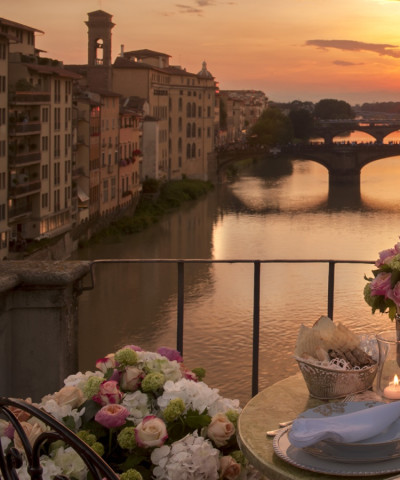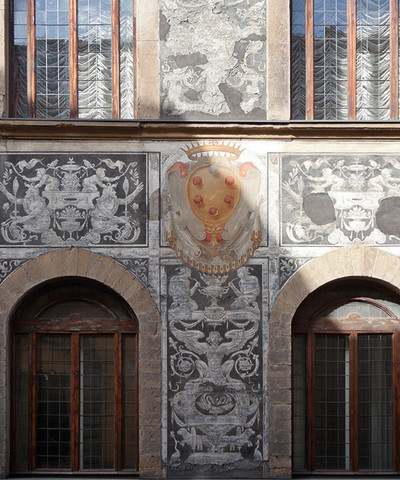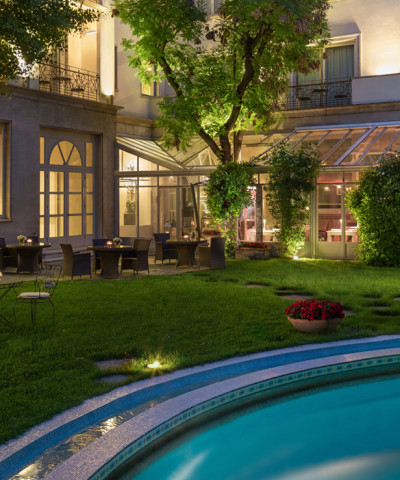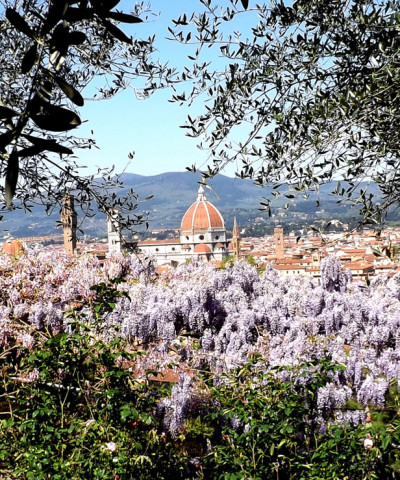Boboli. The king Garden
Jealously guards its secular stories and hidden treasures
Ten hectares of the most wonderful greenery right in the city centre. Hemmed in by the imposing ashlar-work of Palazzo Pitti, the little Oltrarno streets i.e. on the other side of the Arno, the ramparts of Forte Belvedere and Porta Romana, Boboli gardens jealously guards its secret, only revealing it to those who enter the gates in Piazza Pitti or ‘Annalena’ in Via Romana, and make their way through the infinite surprises of the statues, avenues and paths, lawns, secular trees, boxwood hedges and fountains. In Florence they have always called it the ‘king’s garden’, an off-hand familiar nickname that conceals their admiration. It is open from 8.15 to one hour before sunset every day of the year except the first and last Monday in the month, New Year’s Day, 1st May and Christmas Day. Tickets cost 6 euros, free for the under-18s and over-65s with discount for 18-26 year olds. Info 055 294883. A visit is like a trip to a museum, because these gardens, venue for the parties and theatrical shows of the Medici, Lorena and Savoy families are a real open-air stage. They can, however, also be enjoyed as a delightful day out in the park. So rich in vegetation that you forget you are in Florence, until you are unexpectedly reminded when the greenery opens up to offer breathtaking views.
Boboli had a long gestation period. Work on the gardens finished in the nineteenth century after starting in 1550 when the Medicis bought Palazzo Pitti. It was Eleonora of Toledo, the wife of Cosimo I, who desired creation of the most important example of Italian garden in the world. Work started to the rear of the palazzo, initially under architects like Nicolò Tribolo and later Ammannati and Buontalenti. Cosimo II continued in the same direction, in fact he had the gardens extended to plans by Giulio and Alfonso Parigi, adding a secondary axis towards Porta Romana, the so-called ‘viottolone’ to the original one up towards Forte Belvedere. Tribolo had already intervened on the amphitheatre, surrounded by the niches and their ancient-style marble statues and evergreen copses, which was inaugurated in 1637 for the coronation celebrations of Vittoria della Rovere, wife of Ferdinand II de’ Medici. At that time it had the Fountain of the Ocean in the middle, which was then moved to the ‘island’. The Egyptian obelisk then arrived, the oldest monument in Tuscany, dating way back to 1500 BC.
Under Pietro Leopoldo di Lorena the gardens were opened to the public for the first time.
The Florentines strolled along the avenues, meandered along the paths that dissected the lawns and discovered a collection of statues that had grown over the years, from Roman, eighteenth and nineteenth century examples right through to Igor Mitoraj’s contemporary head on the Uccellare lawn, surrounded by huge holm oaks, nymphs, fenced off gardens and copses so close grown that no sunlight filters through, open happy lawns, Italian boxwood hedges, cypresses, all kinds of secular trees, grottoes and fountains. One surprise after another, a huge theatrical construction, which even included the predecessor of the fridge, the famous underground ‘iceboxes’ in the shadiest path, used to store the Medici family food.
The fountains for example. The most famous is the Oceano by Giambologna, standing proud in the middle of the ‘island’ against a thick backdrop of holm oaks, up to 12 metres in height. Its south-facing position ensures protection from the cold even in winter.
Others include the Monkey one opposite the Porcelain Museum, Neptune in the centre of his very own pond used as the source for the gardens’ watering system, one by Mostaccini and another by Ganymede with a lawn of the same name opposite the ‘Lorena-green’ Kaffeehaus, the same colour used for the Lemon house, where the Lorena family protected the first tubs of citrus plants to arrive in Tuscany. Then there is an infinite number of statues: Abbondanza by Tacca and Pegasus adopted as the symbol of the Region of Tuscany; Roman, eighteenth century and others on the Lawn of Columns surrounded by plane trees. And the grottoes: from the Madama to Buontalenti’s famous creation at the Pitti entrance. A trip in history and art, inside a park that is still occasionally used at night, for the Pitti Immagine fashion parties for example or the Florence Festival of Opera, this year running until 30 July. A visit to Boboli is also one of the most enjoyable and magical adventures to be had in Florence.






